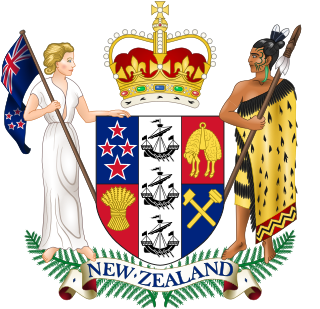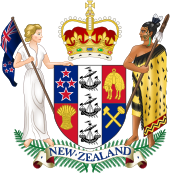A tort is a civil wrong that causes a claimant to suffer loss or harm, resulting in legal liability for the person who commits the tortious act. Tort law can be contrasted with criminal law, which deals with criminal wrongs that are punishable by the state. While criminal law aims to punish individuals who commit crimes, tort law aims to compensate individuals who suffer harm as a result of the actions of others. Some wrongful acts, such as assault and battery, can result in both a civil lawsuit and a criminal prosecution in countries where the civil and criminal legal systems are separate. Tort law may also be contrasted with contract law, which provides civil remedies after breach of a duty that arises from a contract. Obligations in both tort and criminal law are more fundamental and are imposed regardless of whether the parties have a contract.
The Big Four are the four largest professional services networks in the world: Deloitte, EY, KPMG, and PwC. They are the four largest global accounting networks as measured by revenue. The four are often grouped because they are comparable in size relative to the rest of the market, both in terms of revenue and workforce; they are considered equal in their ability to provide a wide scope of professional services to their clients; and, among those looking to start a career in professional services, particularly accounting, they are considered equally attractive networks to work in, because of the frequency with which these firms engage with Fortune 500 companies.

Ernst & Young Global Limited, trade name EY, is a multinational professional services partnership. EY is one of the largest professional services networks in the world. Along with Deloitte, KPMG and PwC, it is considered one of the Big Four accounting firms. It primarily provides assurance, tax, information technology services, consulting, and advisory services to its clients.

KPMG International Limited is a multinational professional services network, and one of the Big Four accounting organizations, along with Ernst & Young (EY), Deloitte, and PwC. The name "KPMG" stands for "Klynveld Peat Marwick Goerdeler". The initialism was chosen when KMG merged with Peat Marwick in 1987.

PricewaterhouseCoopers International Limited is a multinational professional services brand of firms, operating as partnerships under the PwC brand. It is the second-largest professional services network in the world and is considered one of the Big Four accounting firms, along with Deloitte, EY, and KPMG.

Hedley Byrne & Co Ltd v Heller & Partners Ltd [1964] AC 465 is an English tort law case on economic loss in English tort law resulting from a negligent misstatement. Prior to the decision, the notion that a party may owe another a duty of care for statements made in reliance had been rejected, with the only remedy for such losses being in contract law. The House of Lords overruled the previous position, in recognising liability for pure economic loss not arising from a contractual relationship, applying to commercial negligence the principle of "assumption of responsibility".

Caparo Industries PLC v Dickman[1990] UKHL 2 is a leading English tort law case on the test for a duty of care. The House of Lords, following the Court of Appeal, set out a "three-fold test". In order for a duty of care to arise in negligence:

Esanda Finance Corporation Ltd v Peat Marwick Hungerfords was a High Court of Australia case regarding the liability of auditors to third parties. It was decided on 18 March 1997. The appellant, Esanda, loaned money to a corporation in reliance on a report prepared by a finance company, Peat Marwick Hungerfords. When the borrower defaulted on the loan, Esanda turned to the auditors to recover claiming it had acted on reliance of audited accounts which breached mandatory accounting standards in relation to preparing the accounts and but for this breach of duty by Peat Marwick Hungerford. Central to this argument was that Esanda had suffered a loss which would not have occurred if not for reliance on Excel's audited accounts, which were prepared with a breach of standards.
In English tort law, an individual may owe a duty of care to another, in order to ensure that they do not suffer any unreasonable harm or loss. If such a duty is found to be breached, a legal liability will be imposed upon the tortfeasor to compensate the victim for any losses they incur. The idea of individuals owing strangers a duty of care – where beforehand such duties were only found from contractual arrangements – developed at common law, throughout the 20th century. The doctrine was significantly developed in the case of Donoghue v Stevenson, where a woman succeeded in establishing a manufacturer of ginger beer owed her a duty of care, where it had been negligently produced. Following this, the duty concept has expanded into a coherent judicial test, which must be satisfied in order to claim in negligence.
Causation in English law concerns the legal tests of remoteness, causation and foreseeability in the tort of negligence. It is also relevant for English criminal law and English contract law.
Grant Thornton is the world's seventh-largest by revenue and sixth-largest by number of employees professional services network of independent accounting and consulting member firms which provide assurance, tax and advisory services to privately held businesses, public interest entities, and public sector entities. Grant Thornton International Ltd. is a not-for-profit, non-practising, international umbrella membership entity organised as a private company limited by guarantee. Grant Thornton International Ltd. is incorporated in London, England, and has no share capital.
Economic loss is a term of art which refers to financial loss and damage suffered by a person which is seen only on a balance sheet and not as physical injury to person or property. There is a fundamental distinction between pure economic loss and consequential economic loss, as pure economic loss occurs independent of any physical damage to the person or property of the victim. It has also been suggested that this tort should be called "commercial loss" as injuries to person or property can be regarded as "economic".

Ultramares Corporation v. Touche, 174 N.E. 441 (1932) is a US tort law case regarding negligent misstatement, decided by Cardozo, C.J. It contained the now famous line on "floodgates" that the law should not admit "to a liability in an indeterminate amount for an indeterminate time to an indeterminate class."

Candler v Crane, Christmas & Co [1951] 2 KB 164 is an English tort law case on negligent misstatement.

Stone & Rolls Ltd v Moore Stephens[2009] UKHL 39 is a leading case relevant for UK company law and the law on fraud and ex turpi causa non oritur actio. The House of Lords decided by a majority of three to two that where the director and sole shareholder of a closely held private company deceived the auditors with fraud carried out on all creditors, subsequently the creditors of the insolvent company would be barred from suing the auditors for negligence from the shoes of the company. The Lords reasoned that where the company was only identifiable with one person, the fraud of that person would be attributable to the company, and the "company" could not rely on its own illegal fraud when bringing a claim for negligence against any auditors. It was the last case to be argued before the House of Lords.

Dutton v Bognor Regis Urban District Council [1972] 1 QB 373 is an English contract law and English tort law case concerning defective premises and the limits of contract damages. It was disapproved by the House of Lords in Murphy v Brentwood DC and is now bad law except in Canada and New Zealand.
Whether providing services as an accountant or auditor, a certified public accountant (CPA) owes a duty of care to the client and third parties who foreseeably rely on the accountant's work. Accountants can be sued for negligence or malpractice in the performance of their duties, and for fraud.

Scott Group Ltd v McFarlane is a New Zealand case where it was held that an auditor was liable for damages for negligence to a 3rd party which later relied on the audit report.

Saunders & Co v Bank of New Zealand [2002] 2 NZLR 270 is a cited case in New Zealand regarding claims in tort for negligent misstatements.

Deloitte & Touche v Livent Inc , 2017 SCC 63 is a leading case of the Supreme Court of Canada concerning the duty of care that auditors have toward their clients during the course of a professional engagement.










